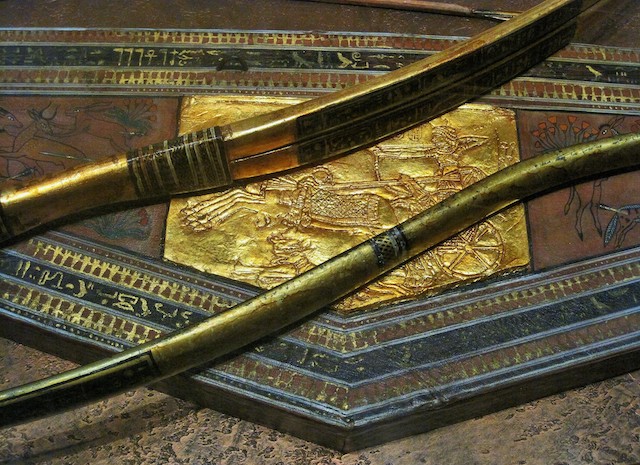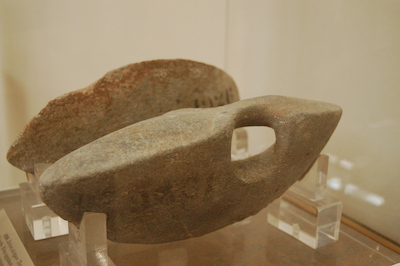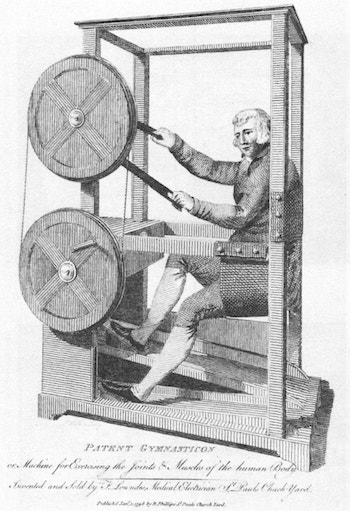Or ‘Let’s all get on the gymnasticon now!’
Exercise through the ages has certainly changed a great deal. Many Ancient Greek physicians such as Herodicus, a former educator of Hippocrates, emphasised the health benefits that exercise had on the body, with Galen even prescribing walks to aid pains and sickness in his patients. Evidence of the popularity of spectator sports in Ancient Egypt, archaic gym equipment in Ancient Rome and Greece and the arise of early exercise machines used by the Georgians and Victorians indicates that exercise has been integral to many civilisations through the ages. This has evolved over time to produce a variety of opportunities we have in the modern day including a range of sports, equipment and even the luxury of online exercise classes that can be viewed from the comfort of our own homes.
Ancient Egypt
Whilst we may associate the Ancient Egyptians as a society that revolved their lives solely around deity, the prospect of death and the resultant afterlife, their way of life on earth is often looked over. Egyptians saw exercise as crucial to their health and wellbeing and as a result lead very active lives, sharing a great interest for spectating and partaking in sporting events that became integral to their way of life from a very young age. Both young girls and boys were taught to swim and boat whilst other sports were gendered, with boys learning to wrestle, row, box and play hockey and girls being taught to juggle, dance and perform rhythmic and floor gymnastic routines.

It was seen as crucial for pharaohs and young princes to exercise as it provided them with the fitness and strength required to lead an army in battle. Whilst a few sports, such as archery, were reserved for pharaohs and nobility, partaking in sport and observing competitions was interwoven within the lives of Egyptians of a range of different socioeconomic backgrounds. Popular ancient Egyptian sports included marathons, high-jump, hand-ball, tug of hoop, tug of war, hockey, javelin, boxing, wresting, weightlifting and gymnastics as well as water sports such as fishing, water- jousting and rowing. An archaic version of hockey was played with palm branches formed to the shape of a hockey stick used to hit a ball that was fashioned using dyed cloth or animal hide around papyrus.
Ancient Greece & Rome
A dedication to exercise through sport was also apparent among the Ancient Greeks, with the ancient Olympic Games first appearing in 776BC that presented competitions in running, long jump, shot put, javelin, discus, boxing and equestrian events. However, this dedication was not exclusive to sporting games as the period witnessed the rise of the earliest examples of gymnasiums which existed as large rooms where male athletes over 18 years old were trained for sporting competitions.
Early variations of exercise equipment that appear in gymnasiums today were also used by the Ancient Greeks and Romans such as different types of ‘halteraes’ (weights held in the hands to give an impetus in leaping) which were crucial in long and high jump as well as in resistance training and are comparable to modern day dumbbells. Other ancient gym equipment included using balls, large stones, logs or sandbags which were utilised by fighters and gladiators in a variety of exercises that involved lifting, throwing or rolling them around. The use of punching bags and the pommel horse were also implemented by gladiators for fighting training, whilst resistance training was introduced as they carried out lateral raises, bicep curls and walking lunges.

Gladiators were aware of the risks of injury that intensive exercise posed and adopted the “tetrad system”, originally developed by the Ancient Greeks, that divided training into cycles of 4 days whilst stressing the need to warm up before exercise:
This knowledge promoted recovery and prevented injury following intense exercise regimes which was aided further by incorporating regular visits to bath complexes after training such as the Roman Baths of Bath, then known as Aquas Sulis. Whilst gladiators made use of these hot baths their health benefits were recognised by other members of Roman society and many public bathhouses built near mineral springs were established as they became more popular.
The Georgians
The Georgians believed that idleness equated to unhappiness and that exercise was crucial in preserving ‘mental vigour’ which could be achieved though activities such as walking, riding, shooting and travelling. The opening of Mr. Voelker’s gymnasium at Regent’s park highlighted this enthusiasm for bodily exercise with the establishment offering regular lessons to men and boys on Monday, Thursday and Saturday from 6-8 o’clock in the morning and on Tuesday, Wednesday and Friday from 6-8 o’clock in the evening. A subscription to the gym cost 1 shilling for 1 month increasing to 6 guineas for a year’s subscription, which is the equivalent today of nearly £600.

The Georgian philosophy that men should work hard for their living was supported by the opening of the gymnasium as its workout regimes focused mainly around increasing strength so that they were prepared for labour. The exercises included running, long and high jumping, climbing masts and ropes, vaulting, fencing, wrestling, strength training for the arms and legs and for the chest and back through the use of parallel bars. These high intensity exercise regimes were reserved for men of the time whilst techniques that taught women how to carry themselves in a respectable manner were seen as more appropriate. Early versions of exercise machines also made an appearance during the Georgian era, providing some of the upper-class with the opportunity to exercise in the privacy of their own homes.
The ‘Gymnasticon’ was invented in 1796 and is suggested to have been the first example of an exercise machine to be designed and was an early relative of the modern day exercise bike. Although the Gymnasticon may have never been built, it paved the way for the development of machines such as the mahogany ‘chamber-horse’. This was composed of coiled springs between multiple boards that provided resistance to imitate the effect that horse riding had on strengthening leg muscles.
The Victorians
The Victorians also appreciated the benefits of exercise. The informative book ‘A manual of exercises arranged for self-instruction in the use of the portable gymnasium’ by Gustav Ernst shows that exercise machines were becoming more common in the home of Victorians. Ernst claimed that the use of such machinery enabled ‘the weak to achieve the deeds of the strong’ whilst increasing strength made it possible for laborious work activities to be completed with ease.
The portable gymnasium was intended to be used by both males and females, with the manual providing information on how to operate the machinery in a variety of exercises that were divided into central, upper, lower and even instructed how to carry out head exercises that strengthened the neck. The manual recommended that exercises should be performed in shorter time frames, with Ernst recommending 15 minute bursts of exercise throughout the day as opposed to a solid hours work-out being more beneficial.
Whilst the equipment, techniques and relatively formal dress worn by Victorians shows a stark difference to the exercise goers that sported the neon leotards and leg warmers of the 80s or gymshark co-ords of today, the benefits of exercise were clearly appreciated in the Victorian era and through the ages, even dating back to Ancient Egypt, maintaining the positive impact that regular exercise has had on our physical and mental wellbeing throughout time and in the present day.
If you are wanting to experience one of the simplest forms of exercise – running – but not sure where to start or want to join a group of like-minded people, just drop me a line or check out what’s on offer in our running calendar!
Sources
Hone, W., 1825. The every-day book, or, The guide to the year (Vol. 2). William Tegg.
http://collections.vam.ac.uk/item/O72618/exercise-chair-unknown
https://www.ancient.eu/article/1036/games-sports–recreation-in-ancient-egypt/
https://www.sis.gov.eg/section/722/733?lang=en-us https://archive.org/details/b20399789


